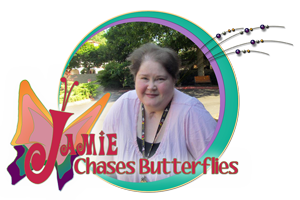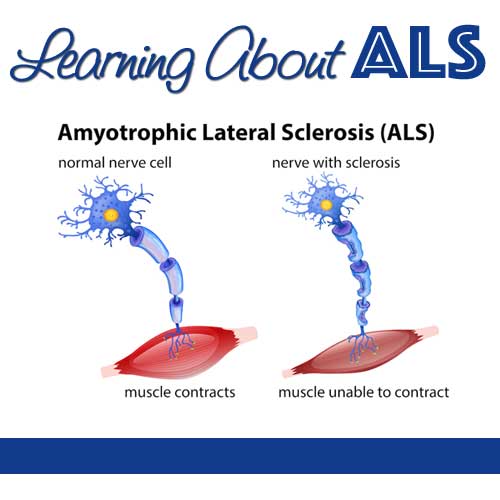When I was a teenager I would watch old movies with my dad and one of those movies was about Lou Gehrig. The Lou Gehric Story was the title of the movie. This movie was about his life as a baseball player in the late 30’s and early 40’s and why he had to retire on June 2, 1941 after being diagnosed with Amyotrophic Lateral Sclerosis (ALS), also known as Lou Gehrig’s Disease.
ALS was discovered in 1869 by French Neurologist Jean Martin Charcot. It became widely known when Lou Gehrig retired because Gehrig found out he had ALS. Gehrig played for the Yankees for 17 years and then he started showing symptoms of a neurological disease. It took a couple of years for him to get the help he needed.
ALS is a neurodegenerative disease that affects nerve cells in the brain and the spinal cord. Amyotropic come from Greek language. A: means no. Myo: means muscles. Trophic: means nourishment. Myotrophic means no muscle nourishment. When muscles have no nourishment it causes them to atrophy or waste away. Lateral identifies the areas in a persons spinal cord where portions of the nerve cells signal and controls the muscles located. Motor neurons reach from the brain to the spinal cord and from the spinal cord to the muscles in the entire body. As ALS progresses it leads to the muscles demise because the muscles are not getting the nutrition it needs to keep the muscles healthy and strong.
As the brain loses control over the muscles lose motor skills such as:
- Breathing: ALS paralyzes the muscles you need to breathe. Many end up with a trach tube. This is a common death for those with ALS. Death by respiratory failure is what it is called.
- Speaking: Slowly the voice box which is a muscle gets weaker and the tongue gets weaker and it causes slurred speech and in time many people end up with a special speaking device to help them communicate.
- The ability to eat: Because swallowing takes muscles in the throat area and choking becomes a hazard and many people with ALS end up with a feeding tube.
- Dementia: As the brain loses control dementia starts happening.
There are two types of ALS:
- Sporadic: which means anyone can get it. This type accounts for 90 to 95 percent of the cases.
- Familial: 5 to 10 percent of the cases have this type. This means you have gotten it from your genes or family heredity.
Some facts about ALS:
- If a family member has ALS there is a fifty percent chance that their offspring will end up having it.
- It is fatal and there is no cure.
- 5,000 people are diagnosed a year with ALS
- Life expectancy is between 2 to 5 years. Sometimes you can live longer like Stephen Hawkins did.
- There are only 4 medications for ALS: Riluzole, Neudexta, Radicada and Tiglutik.
- It takes approximately $250,000 dollars to care for someone with ALS.
- Every 90 minutes someone dies from ALS.
- There is no cure for ALS. It is fatal.
- ALS is more common in men than women.
- There is no straight line to how ALS progresses. It affects each person differently.
- ALS starts affecting the ability to speak before moving on to other areas of the body.
Here is how ALS gets diagnosed:
- Electrodiagnostic test in the form of nerve conduction velocity also known as NIV
- Blood and urine test in the form of resolution serum protein test
- Spinal tap
- X rays and MRI
- Myelogram of cervical spine
- Muscle and nerve biopsy
- Neurological exam
There are a few things that can trigger you getting ALS:
- Smoking
- Environmental toxins
- Military service: studies have shown the greatest portion of people with ALS have served in the military.
Okay, here is the interesting part…Here are a few celebrities who have ALS or who have died from it:
- Lou Gehrig (New York Yankees Baseball Player from 1923-39)
- Stephens Hawkins (Theoretical Physicist, Cosmologist, Author & Mathematical Professor)
- Jim Catfish Hunter (Kansas City / Oakland Athletics and New York Yankees Baseball Pitcher from 1965-79)
- Jacob Javits (New York Senator 1957-81)
- David Nivan (English Actor known for his role in “The Pink Panther” 1963)
- Stephen Hillenburg (Marine Science Educator and creator “SpongeBob SquarePants”)
- Jon Stone (Emmy Award-winning writer, producer and director who helped create ”Sesame Street”)
- Charles Mingus Jr (American jazz double bassist, pianist, composer and bandleader)
- Kim Shattuck (American singer, musician, and songwriter; member of The Muffs and The Pandoras)
- Mike Porcaro (American bass player known for his work with Toto)
- Huddie Ledbetter (American folk and blues singer, musician and songwriter who played a twelve-string guitar. Stage name: Lead Belly)
- Jenifer Estess (American actor, producing director and co-founder of the Naked Angels Theater Company, Nantucket Film Festival and New York Women’s Film Festival)
- Ezzard Charles (American professional boxer and World Heavyweight Champion known as the Cincinnati Cobra 1938-45)
- George Yardley III (NBA Basketball Player for the Detroit Pistons from 1953-62)
- Bruce Edwards (Career caddie for Hall of Fame Golfer, Tom Watson from 1973-89)
- Henry Wallace (American politician, journalist and farmer who served as the 11th US Secretary of Agriculture, 33rd Vice President of the United States and 10th US Secretary of Commerce)
- Maxwell Taylor (General for the United States Army and diplomat, Commander of the 101st Airborne Division, aka “The Screaming Eagles”; appointed by President John F Kennedy as the 5th Chairman of the Joint Chiefs of Staff)
- Steve Gleason (American NFL Player for the New Orleans Saints 2000-2006:Gleason was awarded the Congressional Gold Medal for his contributions for ALS awareness)
- O.J. Brigance (Former Linebacker for the Canadian Football League and American National Football League; senior advisor for the Baltimore Ravens)
- Tim Shaw (Former Linebacker for Carolina Panthers (2007), Jacksonville Jaguars (2008), Chicago Bears (2009-2010) and Tennessee Titans (2010-2012); Shaw currently works to raise awareness for ALS)
There is no cure, there isn’t much you can do about the progression of ALS. There are two things you can do to slow down the progression: having a good eating plan to feed the muscles and moving your body especially range of motion exercises. Nutritionists recommend the Ketogenetic diet so that your muscles get the right amount of nourishment. Here is the ratio they recommend: 75 percent healthy fat, 20 percent protein, and 5 percent carbs.
Range of motion exercises help the joints and the muscles with pain and discomfort. Moving them daily is recommended. It also helps with maintaining mobility for a longer period of time.
Karen G Clemenson and the Wellness Works NW Team would love to have an opportunity to help you thrive with this horrific disease. We can help you develop a wellness plan with good nutrition and range of motion exercises so you can live well for a longer period of time despite ALS. If you would like to discover what we can do to help Contact Us at 360-447-8061.
Here are some links I would like to share with you:
- Amyotrophic lateral sclerosis (ALS) by Mayo Clinic Staff
- Diet and Nutrition Guide for Individuals with ALS by Verita Neuro Pte. Ltd. Staff
- Range of Motion Exercises for ALS Patients by Verita Neuro Pte. Ltd. Staff
- What is ALS? by ALS Association Staff
- What is ALS? What Are the Types and Causes? by WebMD Staff
- Image Credit: CBD for ALS Patients: Effectiveness, Dosage, & How to Use by Justin Cooke and medically reviewed by Abraham Benavides, MD, for Daily CBD
Related Articles:
To look for a particular topic please see our Healthy Living Blogs page. If you don’t find what you are looking for please click on the button below to fill out a request form and someone from Our Team will be glad to research it for you for FREE!
 Jamie Holloway is a co-owner of Wellness Works NW and she is also our Research Manager and writes our Chasing Wellness with Jamie Holloway and Dear Jamie columns. Jamie is also an Independent Wellness Advocate at dōTERRA. She lives in the Portland, Oregon area. Since October 2011 she has been sharing her Journey Toward Health and Wellness with Vasculitis through her blog at JamieChasesButterflies.com. We hope you are as inspired as we are with the raw candor Jamie uses in her writing. If you would like to help support Jamie’s writing efforts please Donate now.
Jamie Holloway is a co-owner of Wellness Works NW and she is also our Research Manager and writes our Chasing Wellness with Jamie Holloway and Dear Jamie columns. Jamie is also an Independent Wellness Advocate at dōTERRA. She lives in the Portland, Oregon area. Since October 2011 she has been sharing her Journey Toward Health and Wellness with Vasculitis through her blog at JamieChasesButterflies.com. We hope you are as inspired as we are with the raw candor Jamie uses in her writing. If you would like to help support Jamie’s writing efforts please Donate now.













